They did this by conducting small mammals surveys (basically rodent surveys) with baited live-traps called Sherman Traps, which we placed in both woodland and field/meadow habitats on-site. Anyone who has ever done field work on rodents knows what a Sherman Trap is. It's the standard in live traps for these kind of critters, and the basic Sherman trap is a metal box with a trip plate inside that allows a door on a coil to snap shut once the animal is inside. They are baited with peanut butter and oats...perhaps some seeds for added attraction.
But first....an invisible grid needs to be measured and flagged so that the traps can be deployed in a systematic fashion (actually traps can also be deployed along simple straight-line transects and randomly). Deploying them in precisely measured grids allows for trapping area and level of effort to be kept constant if one wants to sample across multiple habitats (or even study sites).
So, off they went to measure their grids.....
A simple 25 trap grid can be (for example) 40 meters X 40 meters (traps placed at 10 m intervals). This requires a bit of precision to keep the grid square. It's best to start by finding a direct North-South line with a compass...then laying a tape measure along that exact bearing, to keep the line straight.
Once that is complete, laying traps (or putting in flags) every 10 m gives you one side of the grid. From that original starting point, it's neccessary to then determine an exact west-east bearing....lay a tape measure out, and finally mark off 10 m intervals with flags or traps.
The result might be something like the diagram below:
This part is relatively easy when you're in a wide-open space...like a meadow. But it gets a bit more difficult when working in woodlands.
Next comes the real tricky part: laying out the rest of the grid. It's usually easiest to begin in the lower right corner of your grid...and then to start measuring out 10 m X 10 m cells. To make sure these are correct, one must also measure the diagonal distance across the cell....and when that is correct, you can place your next trap. See figure below for an example of how to start the grid:
Measuring each cell in your grid is easy when there are no obstacles. In fact, the students working in the grassland were done in no time.
Above: holding two 10 m tapes to find the new grid intersection. Note the yellow tape measure that will be used to measure the 14.14 M across the diagonal to make the cell square.
After the traps are baited and set, it's a good idea to get a GPS reading of your grid corners (or one of the corners) to find the traps more easily. Note the flag and the Sherman Trap at the foot of the student with the GPS unit.
The next morning, bright and early, the traps have to get checked and the captured critters released (which is the fun part).
We'll do another round of trapping next week. I'm hoping for some Microtus...and even a Tamias would be fun to wrangle!
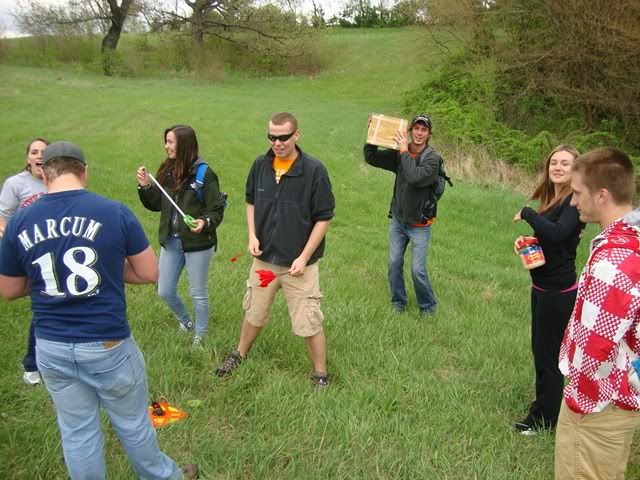
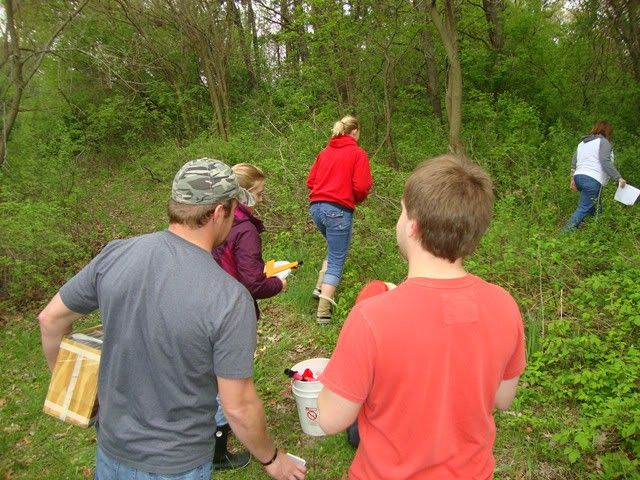
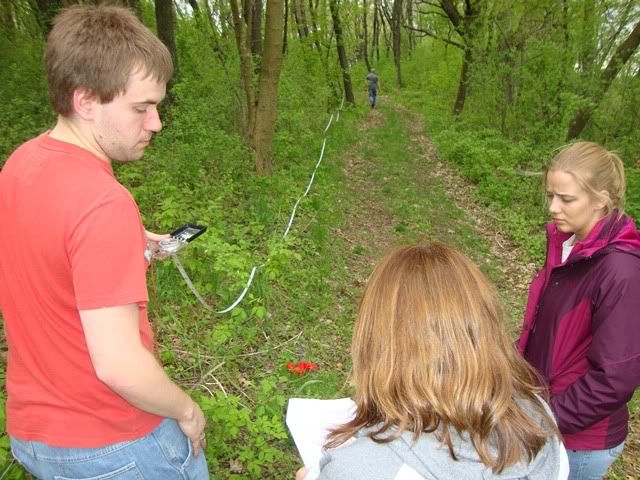
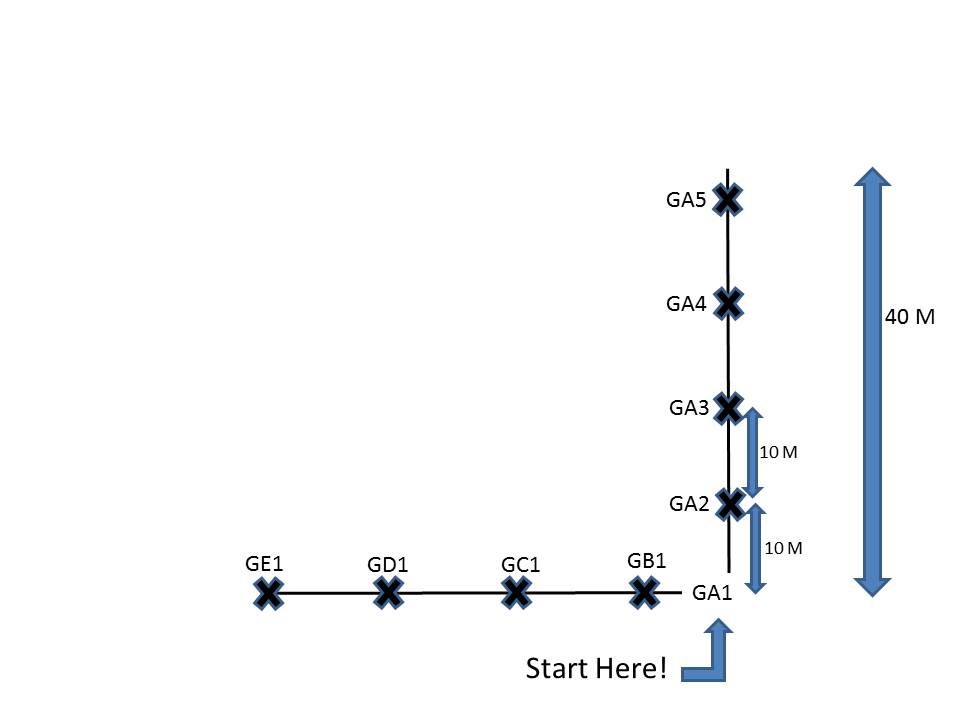
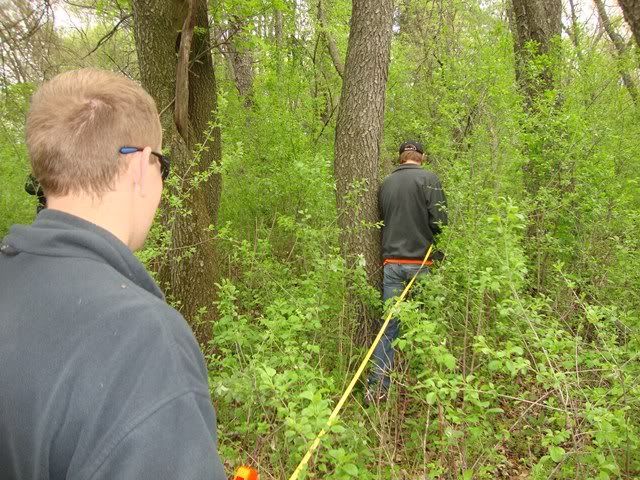
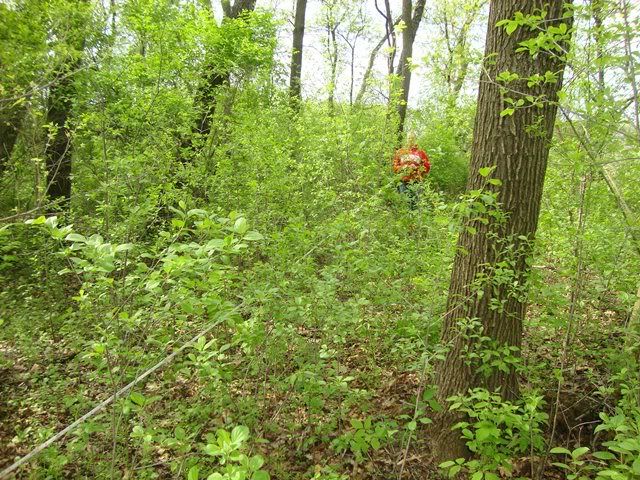
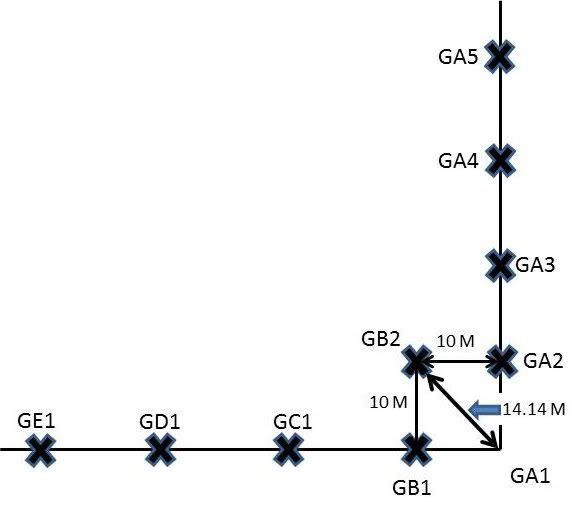
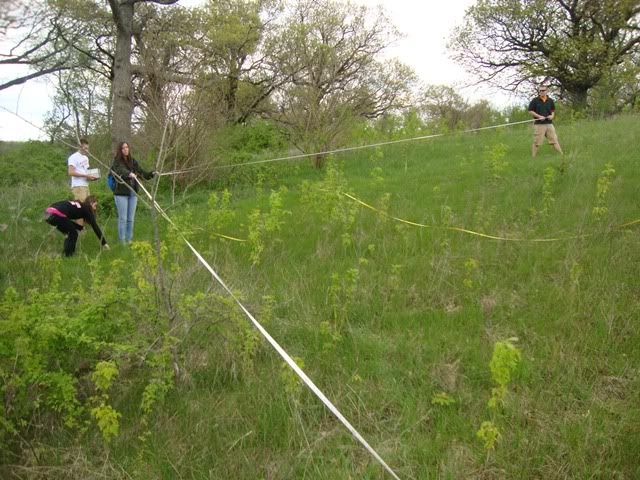
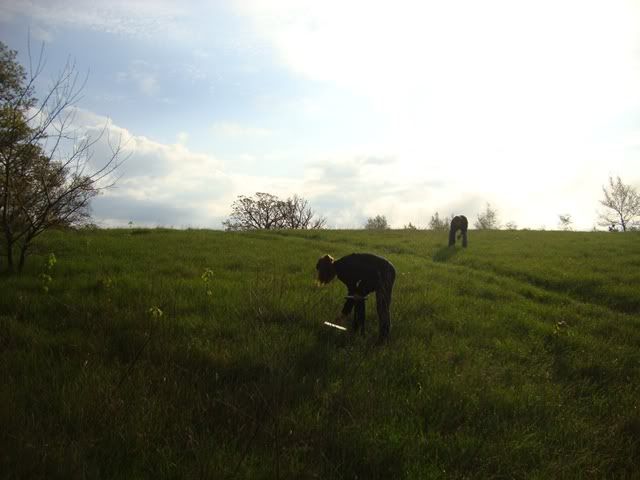

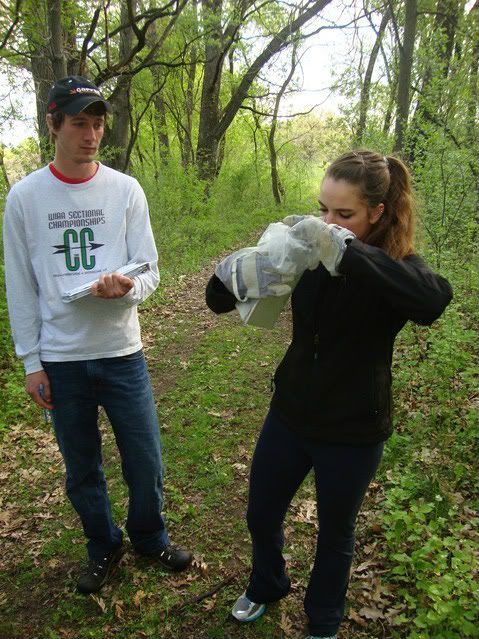

Awesome! I've done this in several classes, it's alot of fun, and good practice to get used to handling live animals as they're not dangerous and easy to catch.
ReplyDeleteI wonder though how you ID'd the P. leucopus? We had a hard time differentiating between those and I think P. maniculatus...
Hi Alyssa...
ReplyDeleteIn truth, these could have been Deer mice....they are very hard to distinguish around here (same as over by you). I subjectively always feel like deer mice are more gray than brown/tan around here...but I have no real evidence to back that up.